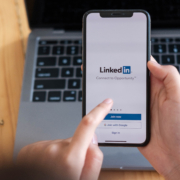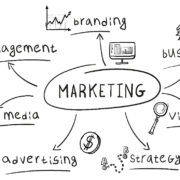Not All Business Cards Are Created Equal
In a world full of digital profiles and LinkedIn connections, business cards might seem like a thing of the past—but don’t be fooled. A thoughtfully crafted business card is still one of the most effective networking tools out there. It’s more than just contact information on a piece of paper—it’s a physical extension of your brand.
At The Hyve Life, we know that first impressions matter. Whether you’re networking at a mixer, meeting a potential client, or connecting with a fellow entrepreneur, your business card should spark conversation, represent your brand, and leave a lasting impression.
Here’s how to make sure your business card stands out—and why quality matters.
It’s Not Just a Card—It’s a Conversation Starter
Your business card should reflect your personality, your profession, and your purpose. A great card doesn’t just get stashed in a wallet—it gets remembered, passed on, and sometimes even shown to others.
Think beyond the basics:
- Include a tagline or positioning statement
- Use bold design elements that align with your brand
- Add a QR code that links to your website or portfolio
The right design invites questions and creates opportunities for follow-up conversations.
Quality Speaks Volumes
You only get one chance at a first impression—so skip the flimsy stock and cookie-cutter templates.
Professional finishes elevate your card and communicate credibility. Consider:
- Matte or soft-touch finishes for a smooth, modern feel
- Raised or spot UV gloss for eye-catching detail
- Textured linen or cotton stock for a refined, tactile impression
- Foil accents or embossed logos to add a premium touch
These finishing touches make your card feel intentional and well-crafted—just like your business.
Pro tip: Don’t settle for mass-market printers like VistaPrint. Work with a local or specialty print shop that offers high-end materials, custom finishes, and the attention your brand deserves.
Stand Out with Size and Shape
Who says a business card has to be 3.5” x 2”? A unique size or shape can help your card stand out in a stack. Rounded corners, square layouts, or custom die cuts (like a card shaped like your logo or industry tool) can give your brand some added flair—without sacrificing professionalism.
Just be sure it’s still easy to store and practical to carry.
Use Both Sides Wisely
One of the biggest mistakes we see? Wasting the back of the card. That second side is prime real estate.
Use it to:
- Showcase your logo
- Share a QR code or appointment link
- Include a short list of services
- Highlight a client testimonial or tagline
Every inch of your business card should be working for you.
Your Card Is a Mini Marketing Tool
A well-designed business card bridges the gap between an introduction and a meaningful connection. It reinforces your brand identity, gives people a way to remember you, and serves as a physical reminder of your professionalism.
When you treat your business card like a marketing asset—not just a formality—it can become one of your most cost-effective tools.
Join the Hyve. Level Up Your Presence.
At The Hyve Life, we believe in building relationships through intentional connection. That means showing up with tools that reflect the quality of your work and the strength of your brand. Whether you’re at a networking event, workshop, or coffee meeting, your business card should leave a lasting mark.
At The Hyve Life we believe networking is not just about exchanging business cards or making surface-level connections. It’s about fostering meaningful relationships that propel both personal and professional growth. Our Philosophy – Networking With Intent, implies networking is a state of mind, a lifestyle, a choice….to always be building our network to empower ourselves and businesses by the connections around us. Join us for our monthly meetings.






